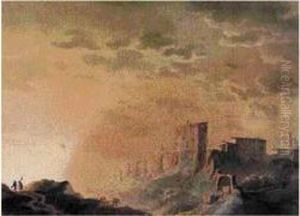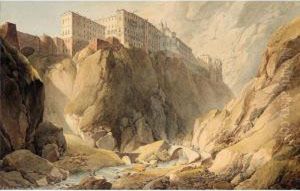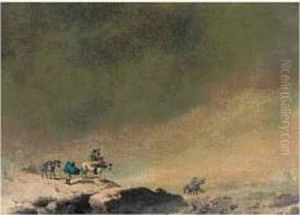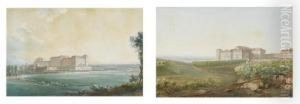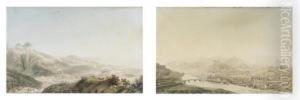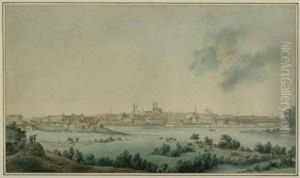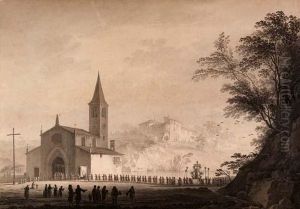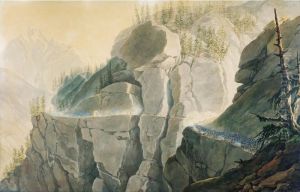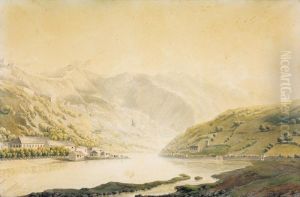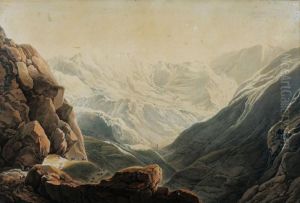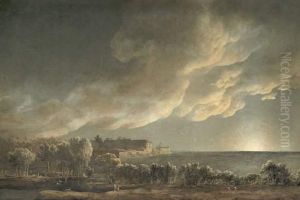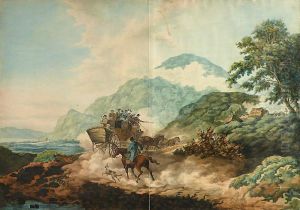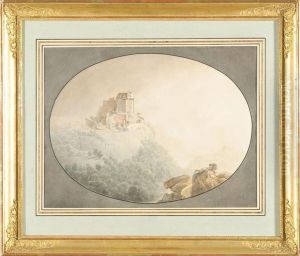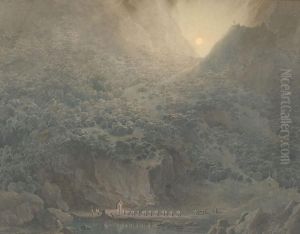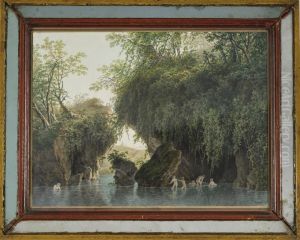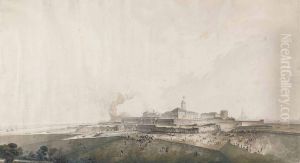Giuseppe Pietro Bagetti Paintings
Giuseppe Pietro Bagetti was an Italian painter and engraver born on April 8, 1764, in Turin, Piedmont. He is chiefly remembered for his detailed landscapes and military scenes, capturing the essence of the Napoleonic wars and the picturesque landscapes of Piedmont. Bagetti was educated at the Accademia Albertina in Turin, where he studied under Giuseppe Levati and later, possibly, under the landscape painter Johann Christian Reinhart in Rome. His early career was marked by his focus on landscapes, influenced by the 17th-century Dutch school and the contemporary French landscape tradition.
In the late 18th and early 19th centuries, Bagetti's career took a significant turn when he was commissioned by the King of Sardinia to document the military campaigns of the French Revolutionary and Napoleonic Wars. His works from this period, characterized by their accuracy and dynamic composition, serve as an invaluable historical record of these tumultuous times. Bagetti's drawings and watercolors from the campaigns of 1792-1796 and 1800 were later engraved and published, earning him widespread recognition.
Despite his success as a military artist, Bagetti continued to produce landscapes, which are considered among his finest works. These pieces often depicted the serene and pastoral landscapes of Piedmont, showcasing his skill in capturing the natural beauty of his homeland. His approach to landscape art was innovative for his time, blending realism with a sense of romanticism that would influence later artists.
Giuseppe Pietro Bagetti died on June 3, 1831, in Turin. His legacy is preserved not only in his artworks, which are found in various museums and collections in Italy and abroad, but also in his contribution to the development of landscape and military painting in the early 19th century. Bagetti's work remains a significant historical and artistic record of the Napoleonic era and the Piedmontese landscape, reflecting the tumult and beauty of his times.
